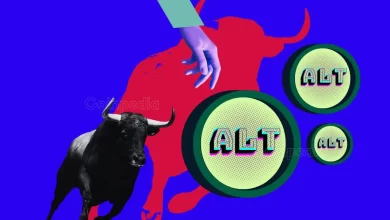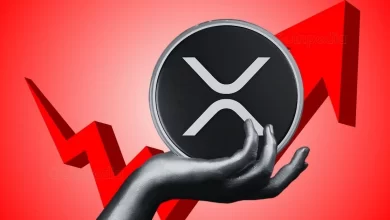How NFT Staking Works: Earn Passive Income from Your Digital Assets!
Say you own a rare digital collectible, like a one-of-a-kind basketball trading card or a unique piece of digital art. Now, what if I told you that instead of just holding onto it, you could make money from it? Sounds interesting, right?
That’s exactly what NFT staking allows you to do.
NFT staking is a way to earn passive income by locking up your NFTs in a platform or protocol in exchange for rewards. It’s like staking cryptocurrencies, but instead of tokens, you use NFTs. This means your digital assets can work for you instead of just sitting in your wallet.
Let’s understand how NFT staking works, why people are doing it, and how you can get started.
What is NFT Staking?
NFT staking is similar to depositing money into a high-yield savings account, but instead of cash, you stake your NFT. In return, the platform you stake it on rewards you with tokens, governance rights, or other benefits.
This concept is gaining traction as NFTs evolve beyond simple digital collectibles. Many projects now integrate staking features, increasing the value and utility of their assets.
How Does NFT Staking Work?
The process of staking an NFT is pretty straightforward.
Here’s a step-by-step breakdown:
- Own an NFT – You need an NFT that supports staking. Not all NFTs can be staked, so check before buying one.
- Choose a Staking Platform – Different platforms allow NFT staking. Examples include NFTfi, Binance NFT, and Rarible.
- Stake Your NFT – Once you connect your wallet to the staking platform, you can stake your NFT.
- Earn Rewards – The platform will reward you with tokens or other perks.
- Unstake When Ready – You can withdraw your NFT after a certain period or when you decide to stop staking.
Simple? Now let’s talk about the benefits.
Why Stake NFTs?
NFT staking is becoming popular for a few key reasons:
1. Earn Passive Income
Instead of just holding NFTs, you can earn rewards. These rewards can be native tokens of the project, governance tokens, or even other NFTs.
Example: In play-to-earn (P2E) games, players can stake in-game NFT assets to earn tokens, which can be sold or reinvested in the game.
2. Increase NFT Utility
While some NFTs are purely collectibles, staking adds real value by turning them into income-generating assets.
Example: The game DeFi Kingdoms allows users to stake NFTs and earn rewards while playing.
3. Governance Rights
In some cases, staking NFTs gives you a say in the project’s future. If you stake an NFT from a DAO (Decentralized Autonomous Organization), you might get voting rights.
Example: Staking an NFT in a DAO can provide voting power on community decisions and future developments.
Popular Platforms for NFT Staking
If you’re ready to stake your NFTs, here are some popular platforms to check out:
1. Binance NFT
Binance, one of the largest crypto exchanges, offers NFT staking on select collections. Users can stake and earn rewards in Binance’s ecosystem.
2. NFTfi
NFTfi allows users to stake their NFTs as collateral for loans. Instead of selling your NFT, you can borrow against it and still keep ownership.
3. Rarible
Rarible has a staking system where users can earn the RARI token by staking certain NFTs. RARI is the governance token of the Rarible marketplace.
4. Axie Infinity
Axie Infinity, a play-to-earn game, allows users to stake their in-game NFTs and earn AXS tokens.
Each platform has different rules and reward systems, so always read the details before staking.
Risks of NFT Staking
Like any crypto investment, NFT staking comes with risks. Here are key factors to consider before staking:
1. Market Volatility
NFT values can fluctuate significantly. If the price of your staked NFT drops, your overall returns may decrease, potentially leading to a loss.
2. Platform Security Risks
Not all staking platforms are secure. Some may be vulnerable to hacks, scams, or even sudden shutdowns. Always use reputable, well-established platforms with strong security measures.
3. Lock-up Periods
Certain platforms require you to lock your NFT for a fixed period, preventing you from selling or transferring it. Make sure you’re comfortable with the staking duration before committing.
How to Start NFT Staking?
If you’re ready to try NFT staking, follow these steps:
- Get an NFT – Buy an NFT that supports staking. Research which collections offer this feature.
- Set Up a Crypto Wallet – Use wallets like MetaMask or Trust Wallet to store and stake your NFT.
- Pick a Staking Platform – Choose a reliable platform that supports your NFT.
- Stake and Earn – Follow the platform’s staking process and start earning rewards.
- Also Read :
- How to Create and Mint Your First NFT: A Simple Learning Guide
- ,
Is NFT Staking Worth It?
NFT staking is a great way to earn passive income, but it’s not for everyone. If you already own NFTs from projects that offer staking, it makes sense to take advantage of it. But if you’re buying NFTs just to stake them, consider the risks.
At the end of the day, NFT staking is another way to make your digital assets work for you. It’s exciting, innovative, and still evolving. If you’re in the NFT space, it’s worth exploring!










